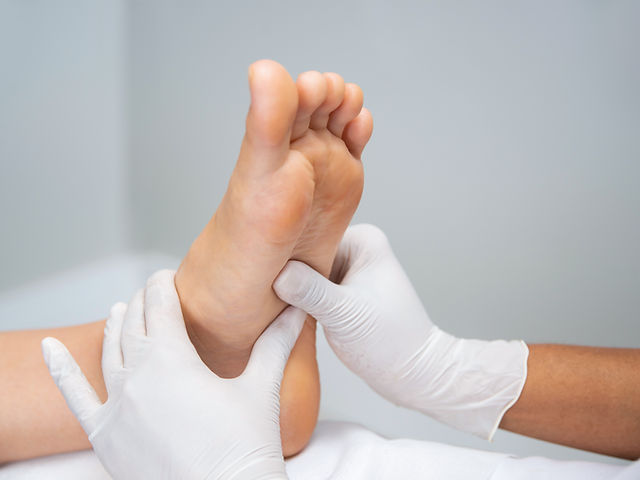Foot Mobilisation Therapy
Our Philosophy
Definition
Many foot problems develop as a direct result of the foot not functioning correctly over many years. For example, if the foot rolls inwards more than it should (over pronation), the small joints in the feet have no chance of aligning properly, and long-term this poor joint positioning results in abnormal tightening in the ligaments, tendons, muscles, and nerves around those joints, which can lead to joint stiffness and pain.
FMT involves gentle, manipulation and mobilisation of specific foot and ankle joints that have become stiff and lack normal movement. The technique helps to break up adhesions that are preventing movement and mobility around joints.

Symptoms that could indicate suitability for FMT
- Postural problems, causing pain in your knees, legs and hips
- Heel, ankle and arch pain
- Shin Splints
- Metatarsalgia
- Bunions
- Sesamoiditis
- Hammer toes and clawed toes

Treatment
Initial Foot Mobilisation therapy consultation will begin with discussing the nature of your problem and how it impacts on your walking and standing. We will then assess the dynamic and gait function of your leg and foot, assess the range and quality of motion of all the joints of the foot from the ankle to the toes of both feet. Finally we assess the strength and flexibility of the muscles and ligaments of your legs and feet.
A personal treatment plan will be devised and will include corrective exercises that must be done in conjunction with joint mobilisation therapy. The reasons for the corrective exercises are for strengthening, stretching and stabilisation, and these exercises will teach you how to maintain the improvement achieved from joint mobilisation, so you can enjoy long term relief from pain.
FMT aims to gradually restore proper movement and get the feet working the way they should. When your feet function correctly, pain reduction follows.
